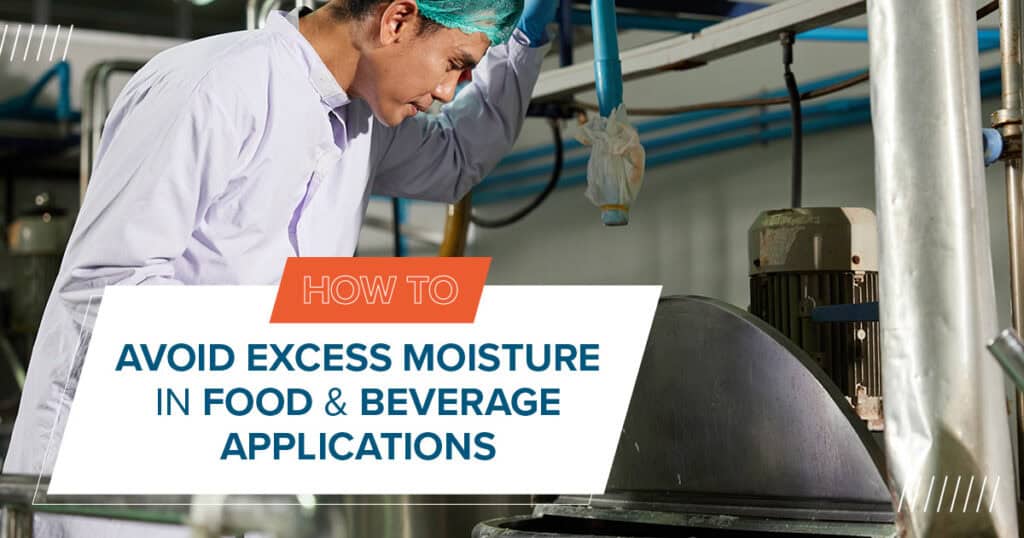Excess moisture in food and beverage pumping and packing applications is a common challenge that can lead to various problems. Examples include product spoilage, compromised safety, and reduced operational efficiency of your equipment. One of the most effective tools in managing moisture levels in these environments is a vacuum pump.
Vacuum Pumps for Moisture Control
Vacuum pumps are integral to many food and beverage processes, including drying, packaging, and degassing. By removing air and reducing pressure, these pumps evaporate moisture at lower temperatures, which is crucial to preserve the quality of heat-sensitive products. This process can improve the shelf life of food products. In addition, it may help maintain their texture, flavor, and nutritional value.
However, managing the moisture that enters the vacuum pump system is critical. When moisture condenses within the pump, it can lead to corrosion, oil contamination, and reduced energy efficiency. This is why certain steps must be taken to reduce moisture within your vacuum pump system.
Incorporating Ballast Valves
One of the most effective ways to manage moisture in a vacuum pump is through the use of ballast valves. A ballast valve (also known as a gas ballast valve) allows a controlled amount of atmospheric air to enter the pump during the compression phase. This influx of air keeps the moisture in a vapor state, preventing condensation within the pump. This vapor is later expelled from the system.
The operation of ballast valves is particularly beneficial in food and beverage applications where moisture levels are high. Take the packaging of liquid products, for example. The vacuum pump might encounter significant moisture content in this application. Without a ballast valve, this moisture could condense within the pump. By using a ballast valve, the moisture is managed more effectively. This can ensure the vacuum pump operates efficiently and with minimal risk of contamination.
Optimizing Vacuum Pump Systems for Moisture Control
To further optimize moisture control in food and beverage applications, it’s important to consider the following practices:
- Regular Maintenance—Ensure the vacuum pump and its components (including the ballast valve) are regularly maintained. This includes checking for leaks, monitoring oil levels, and making sure the valve is functioning correctly. Regular maintenance prevents moisture accumulation and prolongs the life of the pump equipment.
- Proper Sizing—Selecting the appropriate vacuum pump size for the specific application is crucial. An undersized pump may struggle to handle the moisture content, leading to condensation issues. Conversely, an oversized pump might lead to operational inefficiencies. Working with a knowledgeable equipment supplier can ensure the pump is correctly sized for the application.
- Monitoring System Conditions—Continuously monitor the vacuum system’s operating conditions, including pressure and temperature. This can detect early signs of moisture-related issues and allow for timely intervention before significant problems arise.
DXP Pacific Vacuum Pump Solutions
To learn more about vacuum pumps, ballast valves, and other food and beverage processing solutions, contact DXP Pacific today. We can find the best equipment and incorporate the right system optimization strategies based on your specific food and beverage application.

